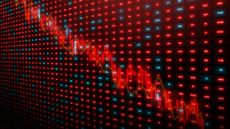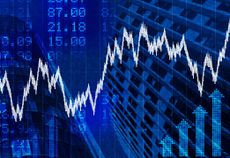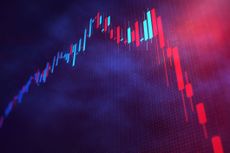International Stocks: Time to Explore Investments Abroad
It's time for American investors to pack up their stay-at-home strategy and go shopping abroad for international stocks.


International stocks: Why bother? For the greater part of the past decade, it hasn't paid to invest abroad. U.S. stocks beat their overseas counterparts in eight of the past 10 calendar years. It's little wonder that many investors now avoid foreign stock markets.
"Our clients see international investing as a greater risk," ignoring any diversification benefits the asset class may provide, says Lewis Altfest, chief executive of Altfest Personal Wealth Management.
But it may pay to bother now. The stars are aligning for foreign shares. Inflation is easing, for a start, in much of the developed world and some emerging countries. "A lot of last year's headaches – higher inflation and rising interest rates – should subside throughout this year," says Nicole Kornitzer, manager of Buffalo International, "so the big question is how much of those rate hikes will flow through and cause a recession" and how bad the downturn will be.

Sign up for Kiplinger’s Free E-Newsletters
Profit and prosper with the best of expert advice on investing, taxes, retirement, personal finance and more - straight to your e-mail.
Profit and prosper with the best of expert advice - straight to your e-mail.
But the economic outlook this year may not be as gloomy as economists once thought. Though the International Monetary Fund expects global growth to slow to 2.9% this year, down from an estimated 3.4% in 2022, many market strategists and economists think that in certain key markets, particularly the eurozone, any recession will be shallower than originally expected. Some say Europe may avoid a recession entirely.
What's more, foreign shares are cheap – cheaper than they have been in 15 years relative to U.S. stocks, according to some calculations. Of course, "you could have made the same observation anytime over the last two years, and still, international markets didn't outperform," says Jed Weiss, a Fidelity international-stock fund manager. "But starting points matter. They were cheap two years ago and they're even cheaper today." The dollar is weakening, too, which can be a boon for emerging markets.
China's reopening will boost international stocks
And then there's China. It’s still the world’s growth engine. Thanks to its early January reopening, which improved the outlook on lingering supply-chain snags and on trade to and from China in Asia and Europe, international markets are off to a great start this year.
In the first month of 2023, two broad MSCI benchmarks, the EAFE and the Emerging Markets index, logged gains of 8% – or close to it. The MSCI China index climbed 12%. And markets in Germany and Korea, which strategists say will benefit most from China's reopening, gained more than 12%. The S&P 500, by contrast, is up 6%.
Many strategists predict this trend will continue. "We expect international stocks to deliver a superior return to the S&P 500 over the next several market cycles," says UBS chief investment officer of global wealth management Mark Haefele. In other words, it's time for American investors to pack up their stay-at-home strategy and go abroad.
Indeed, many investors are already rushing in, particularly in emerging markets. So far this year, emerging-markets stock and bond funds have experienced huge net inflows. But investing in foreign markets can be tricky. Uncertainty lingers about just what will happen with global economies. The war in Ukraine continues. And investors tend to be fickle about international stocks. "People get very hot and very cold quickly" about foreign stock markets, says David Marcus, chief executive of Evermore Global Advisors, often with little due diligence.
And international investing comes with an extra set of challenges, given the array of different countries, and their respective currency, regulatory and political risks. The MSCI emerging-markets benchmark, for instance, comprises 24 countries; the developed market benchmark, 21. On top of that, emerging markets carry greater liquidity risk, meaning it's not always easy to buy or sell securities quickly and efficiently.
We've come up with several ways to help you navigate overseas markets. Starting with mutual funds and exchange-traded funds, we lay out what we see as the best opportunities, first by broad geographical area and then by region and country. We also highlight six foreign stocks worth buying now. But dip in slowly. "While we expect elevated levels of volatility to persist for the foreseeable future, we also see opportunities for investors amid the fog," says Ben Kirby, cohead of investments at Thornburg Investment Management. Returns and data are as of Jan. 31.
Start with funds
A broad-based foreign-stock index fund is a good starting place to boost your overseas holdings. The Vanguard Total International Stock ETF (Symbol: VXUS, $56, Expense ratio: 0.07%) owns nearly every publicly traded foreign stock in developed and emerging markets.
For a quick dose of emerging-markets exposure, consider the iShares Core MSCI Emerging Markets ETF (IEMG, $51, 0.09%), which tracks the MSCI EM index. Actively managed mutual funds offer an opportunity to outpace the indexes.
The Janus Henderson Global Equity Income Fund (HFQTX, 1.02%), a member of the Kiplinger 25 (our favorite no-load funds), which focuses on dividend-paying foreign stocks trading at discount prices, has done just that over the past one, three and five years. Looking ahead, comanager Ben Lofthouse thinks the fund is well positioned. The stocks in the fund sport an average price-earnings multiple of nine, based on estimated earnings for the year ahead. "It's quite unusual to see a diversified portfolio invested across all sectors trading at that multiple," he says. "And there's still so much value out there." The fund yields 3.8%.
Say ja to Europe
"Growth in Europe is likely to accelerate in the coming months," says UBS's Haefele, thanks to lower-than-expected gas prices and a mild winter. The iShares Core MSCI Europe ETF (IEUR, $52, 0.09%) holds shares in more than 1,000 eurozone and U.K. companies. The U.K., France, Switzerland and Germany are its biggest country exposures.
The Buffalo International Fund (BUFIX, 1.03%) is worth considering, too. It's an actively managed, diversified foreign-stock fund, but more than 70% of its portfolio is invested in European and U.K. stocks. Manager Nicole Kornitzer looks for "premier growth companies and well-priced stocks." Her focus on free cash flow (cash left after expenses to maintain and invest in the business) in relation to a stock's market value means the fund avoids high-momentum stocks trading at ridiculous prices – and that helped last year. Over the past 12 months, the fund's loss of 6% outpaced 82% of its peers (funds that invest in large, growing foreign companies). Its long-term record shines, too. Over the past decade, the fund’s 7.6% annualized return beat 88% of its peers.
Finally, Germany stands to be a big beneficiary from improving economic growth in Europe and China's reopening because it has an export-focused economy. The iShares MSCI Germany ETF (EWG, $28, 0.50%) is an easy way to build a little exposure. The ETF holds shares in 58 firms, including SAP (SAP) and Mercedes-Benz Group (MBGAF).
Find green shoots in emerging Asia
Certain Asian countries could offer "green shoots for growth," say Morgan Stanley strategists. The Baron Emerging Markets Fund (BEXFX, 1.33%), a Kip 25 fund, is big on the region – more than 60% of its assets are invested in China, India and Korea, its three biggest country exposures. Among its top holdings are Samsung Electronics and two Indian giants, Reliance Industries and Bajaj Finance.
China's economy is expected to grow 5.2% in 2023 thanks to a rebound in domestic consumption and its reopening. The catch is that the government can throw a wrench in company fortunes without warning, as it did in its 2021 regulatory crackdown on tech firms. We're cautious on China and prefer investing in its growth indirectly.
But for intrepid investors, we like the approach of the Matthews China Dividend Fund (MCDFX, 1.12%), which boasts above-average returns with below-average volatility over the past three, five and 10 years. Korea dominates China's import market for intermediate goods (raw materials or semi-finished products used to make other goods), so Korea is a prime candidate to benefit from China's reopening. The Matthews Korea Fund (MAKOX, 1.13%) is the granddaddy of the ultrashort list of Korea-focused funds. Over the past decade, the fund has returned 5.0% annualized.
India is the region's best long-term growth story, but it will take time. "India is set to surpass Japan and Germany to become the world's third largest economy by 2027 and will have the third-largest stock market by the end of this decade," says Ridham Desai, Morgan Stanley's chief India strategist, which means it could be a "once in a generation" opportunity for investors. The WisdomTree India Earnings Fund (EPI, $33, 0.84%) stands out for its solid long-term returns and average volatility relative to peers. It tracks a proprietary index focused on profits. The more profitable the company and greater a stock's accessibility (ease of trading) to foreign institutional investors, the bigger its weight in the portfolio.
International stocks to buy now
All but one of the international stocks highlighted below trade as American depositary receipts (the exception is a Canadian company). ADRs trade on U.S. exchanges. Shares are priced in dollars, and dividends are paid in dollars, converted from their home currency – so the shares are still subject to the risk of currency swings. And depending on the type of ADR, the amount of financial information available can vary.
Deutsche Post AG (DPSGY, $43). This German mail and parcel company is the biggest in Europe. Its well-known shipping business, DHL, accounts for the largest chunk of revenues – 79% of total sales. It's part of an oligopoly, along with FedEx (FDX) and UPS (UPS), in the international express shipping business. DHL also provides other services, such as supply-chain management, e-commerce logistics and freight transport, in 220 countries worldwide.
Tweedy, Browne International Value managers picked up shares in Deutsche Post last summer, when the stock traded at a discount after a nearly 50% drop in price. Shares have since recovered a bit but are still a bargain: The stock trades at 13 times expected earnings for the year ahead – below its five-year average forward P/E of 16. And it pays a dividend yield of 4.1%. Tweedy comanager Andrew Ewert says Deutsche Post is well positioned to benefit from ongoing growth in e-commerce. He also notes that DHL is the kind of business that can raise prices with little impact to overall revenue if inflation lingers.
Kinaxis (KXSCF, $116). The pandemic changed how companies think about managing their supply chains. Instead of fixing problems "just in time" or as they occur, companies now want a "just in case" system that can head off complications earlier, says Zoey Zuo, a comanager at Brown Capital Management International Small Company, a Kiplinger 25 fund. Kinaxis, a small Canadian software firm, makes the go-to software to achieve that end.
BMO Capital Markets analyst Thanos Moschopoulus says the software offers customers a "control-tower view of their supply chain, highlighting issues that may affect their ability to meet customer demand." The price tag is high, and the software can take months to install, so once a business buys Kinaxis's software, it tends to stick with it. Although the firm said recently that demand is "continuous and accelerating," sales growth isn't as robust as it was in 2022, when it jumped an estimated 47%. Moschopoulus still rates the stock Outperform (Buy), expecting the company to report a 12% boost in revenues in 2023 from the previous year, in line with its pre-COVID sales trend.
Brown Capital's Zuo says the stock remains one of her favorites in part because the company recently began to allow customers to choose from a "chef's menu" of its software, with the ability to add new options over time. The new model shortens the software installation time and has expanded the company's addressable market from 3,000 firms to more than 10,000.
LVMH Moët Hennessy Louis Vuitton (LVMUY, $175). Shares in this luxury goods purveyor have climbed 8% over the past 12 months, mostly because people are spending money after being locked down during the pandemic. China's reopening and the lifting of travel restrictions in Hong Kong were boosts, too – much of the stock's gain was notched in recent weeks.
Uncertainty looms over many of the world's economies – inflation, risk of recession and declining consumer confidence – but luxury-goods buyers may not feel the pinch as much. Analysts Claudia D'Arpizio and Federica Levato, at investment firm Bain & Co., expect continued growth for the global luxury-goods market for the rest of the decade, even in the face of present economic turbulence.
The run-up in the stock's price makes LVMH one of the largest stocks in Europe by market value. But the stock is still cheap: At an ADR price of $175, shares trade at 25 times expected earnings, a discount to its average forward P/E over the past five years of 34.
Siemens (SIEGY, $78). Once a stodgy industrial firm involved in power generation and distribution, Siemens is now helping companies digitize and automate their factories and shift away from fossil fuels to more renewable energy sources.
Its transformation has fattened operating profit margins and boosted its free cash flow to all-time highs in recent years, according to a report from CFRA Research. It's a sprawling business. Siemens's digital industries business, which accounted for 27% of revenues in its most recent fiscal year (ending in September), provides products and software that help other companies automate factories, motors, drives and the like. Its smart-infrastructure segment (24% of revenues) builds sustainable buildings and makes products and software to support the transition to renewable energy sources.
But its fastest-growing business segment is medical imaging and laboratory diagnostics. CFRA analyst Alan Lim Seong Chun rates the shares a Buy in part because of the firm's "bright earnings prospects" due to solid demand for automation and sustainability globally.
STMicroelectronics (STM, $47). This European semiconductor producer is one of the world's largest. It makes chips for many products, including Apple's (AAPL) iPhones. But it also outfits cars with chips that help with a variety of electronic functions, from collision warnings and airbags to reducing fuel consumption. Tesla (TSLA) is a big customer.
Now it's working to gain share in the market for silicon-carbide chips, says Buffalo International's Kornitzer. The chips are in high demand for electric vehicles because silicon carbide-based electronics can operate at high-temperature settings. Industry groups estimate global revenues for silicon carbide chips will reach $2.2 billion by 2026 – double the revenues in 2022.
The semiconductor business is highly cyclical, and it's now in the middle of a down stretch. STMicroelectronics shares have been flat over the past 12 months. Kornitzer says the stock is "attractively priced" in part because the firm's silicon-carbide business will boost overall profit margins over the next five years and "the stock is not priced for that scenario."
Unilever (UL, $51). If you know Dove soap, Hellmann's mayonnaise and Ben & Jerry's ice cream, then you know Unilever. It is the leading supplier of home and personal-care products, with an expansive geographic footprint of more than 190 countries and some 2.5 billion customers.
It's also a relatively safe way to tap into the growth of the middle class in many emerging markets. Its fastest-growing markets include Brazil, India, Pakistan, Turkey and Vietnam. Just don't expect go-go growth. "Moving the needle on Unilever's €52 billion in sales in a low-growth environment is challenging," says Morningstar analyst Philip Gorham. But the company's broad portfolio of products across multiple categories "creates a virtuous cycle" of competitive and cost advantages that new entrants simply cannot replicate, he adds.
At an ADR price of $51, the stock trades at a P/E multiple of 17, a small discount to its five-year average P/E of 20. But that's a 30% discount to the multiple of its biggest competitor, Procter & Gamble (PG). And the stock boasts a fat, 3.6% dividend yield.

Nellie joined Kiplinger in August 2011 after a seven-year stint in Hong Kong. There, she worked for the Wall Street Journal Asia, where as lifestyle editor, she launched and edited Scene Asia, an online guide to food, wine, entertainment and the arts in Asia. Prior to that, she was an editor at Weekend Journal, the Friday lifestyle section of the Wall Street Journal Asia. Kiplinger isn't Nellie's first foray into personal finance: She has also worked at SmartMoney (rising from fact-checker to senior writer), and she was a senior editor at Money.
-
 Why United Airlines Stock Is Flying Higher After Earnings
Why United Airlines Stock Is Flying Higher After EarningsUnited Airlines beat expectations for the first quarter and its stock is by soaring. Here's what you need to know.
By Joey Solitro Published
-
 Super Micro Computer: Why This Hot Stock Could Hit $1,500
Super Micro Computer: Why This Hot Stock Could Hit $1,500Super Micro Computer's long-term AI revenue potential is underappreciated, Loop Capital says. Here's what you need to know.
By Joey Solitro Published
-
 Stock Market Today: Stocks Stabilize After Powell's Rate-Cut Warning
Stock Market Today: Stocks Stabilize After Powell's Rate-Cut WarningThe main indexes temporarily tumbled after Fed Chair Powell said interest rates could stay higher for longer.
By Karee Venema Published
-
 Stock Market Today: Stocks Reverse Lower as Treasury Yields Spike
Stock Market Today: Stocks Reverse Lower as Treasury Yields SpikeA good-news-is-bad-news retail sales report lowered rate-cut expectations and caused government bond yields to surge.
By Karee Venema Last updated
-
 Stock Market Today: Nasdaq Leads as Magnificent 7 Stocks Rise
Stock Market Today: Nasdaq Leads as Magnificent 7 Stocks RiseStrength in several mega-cap tech and communication services stocks kept the main indexes higher Thursday.
By Karee Venema Published
-
 Stock Market Today: Stocks Tumble After a Hot Inflation Print
Stock Market Today: Stocks Tumble After a Hot Inflation PrintEquities retreated after inflation data called the Fed's rate-cut plans into question.
By Dan Burrows Published
-
 Stock Market Today: Stocks End Mixed Ahead of Key Inflation Reading
Stock Market Today: Stocks End Mixed Ahead of Key Inflation ReadingEquities struggled before tomorrow's big Consumer Price Index report.
By Dan Burrows Published
-
 Stock Market Today: Stocks Closed Mixed in Choppy Trading
Stock Market Today: Stocks Closed Mixed in Choppy TradingVolatility returned as market participants adjusted their expectations for rate cuts.
By Dan Burrows Published
-
 Stock Market Today: Stocks Rally After Blowout Jobs Report
Stock Market Today: Stocks Rally After Blowout Jobs ReportStocks soared into the weekend as investors brushed off strong payrolls data and lowered rate-cut expectations.
By Dan Burrows Published
-
 Stock Market Today: Stocks Swing Lower as March Jobs Report Looms
Stock Market Today: Stocks Swing Lower as March Jobs Report LoomsThe main indexes turned negative in mid-afternoon trading as all eyes turned to tomorrow morning's key employment update.
By Karee Venema Published